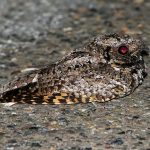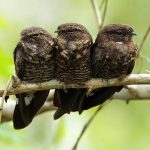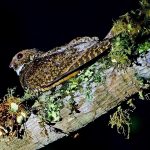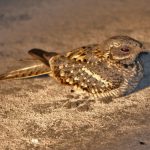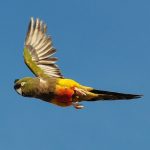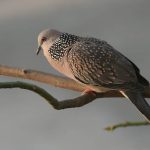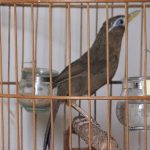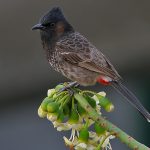Spotted nightjar
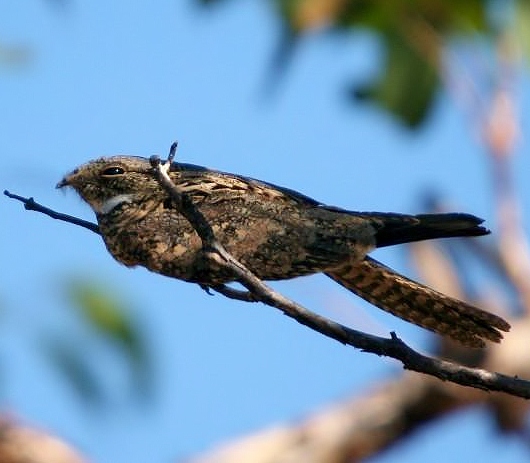
 |
| Photo by Lindsay Hansch (Internet Bird Collection) |
Common name:
spotted nightjar (en); noitibó-malhado (pt); engoulevent argus (fr); chotacabras argos (es); Argusnachtschwalbe (de)
Taxonomy:
Order Caprimulgiformes
Family Caprimulgidae
Range:
This species is found throughout most of Australia, with the exception of the eastern coast from central Queensland to south-eastern South Australia. The more southern population migrate north to winter in northern Australia, the Indonesian islands in the Banda Sea and possibly also in New Guinea.
Size:
These birds are 27-35 cm long and weigh 75-130 g.
Habitat:
The spotted nightjar is mainly found in open woodlands, savannas and grasslands, but also in Acacia scrublands and mangroves.
Diet:
They mainly feed on insects and other arthropods, which they usually catch in flight at very low altitudes, just 20-30 cm above the ground. They sometimes also forage on the ground.
Breeding:
Spotted nightjars breed in August-February. They don’t build a nest, laying the egg on bare soil or among the leaf litter. The female lays a single greenish, olive or yellowish egg with purple spots, which is incubated by both parents for 29-33 days. The chick will make its first flight attempts 15-20 days after hatching, but only becomes independent about 30 days after hatching. As soon as the young leave the nest the female may lay another egg and each pair may raise 1-3 chicks per season.
Conservation:
IUCN status – LC (Least Concern)
This species has a very large breeding range and is described as widespread but only locally abundant. The population is suspected to be stable in the absence of evidence for any declines or substantial threats.

